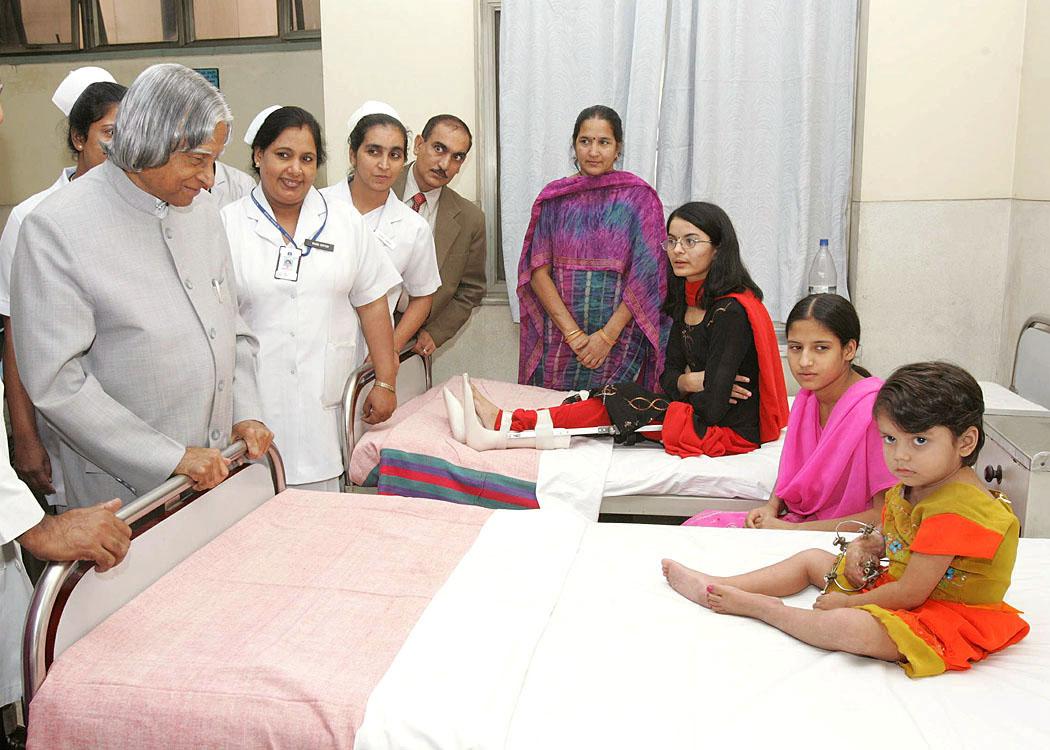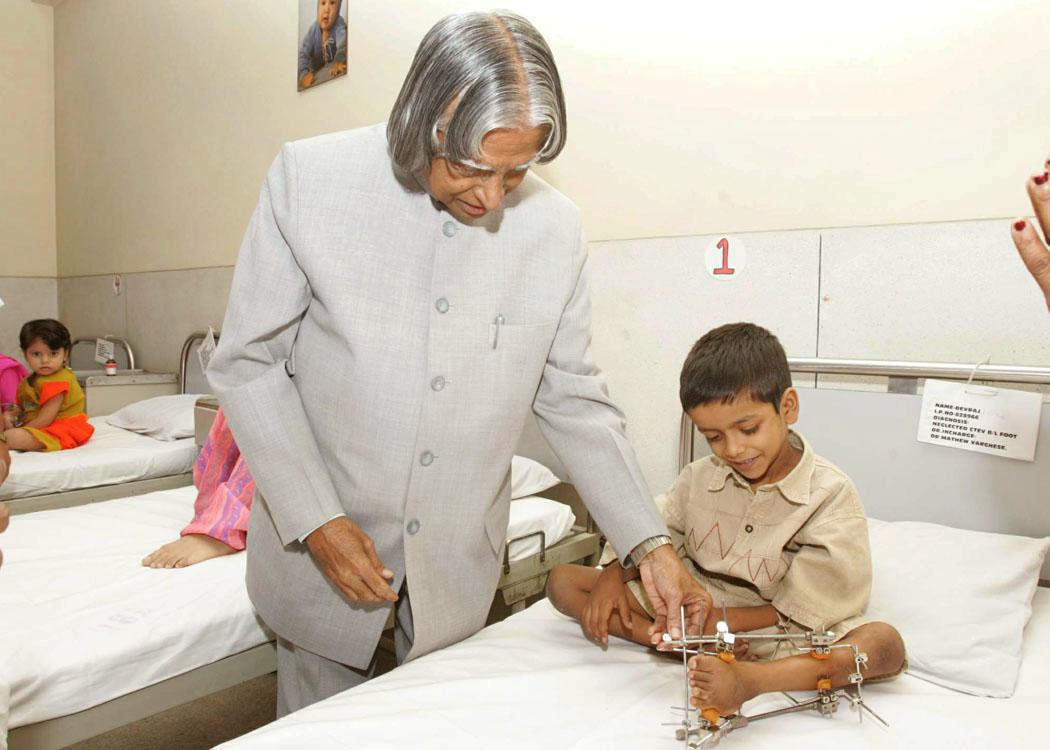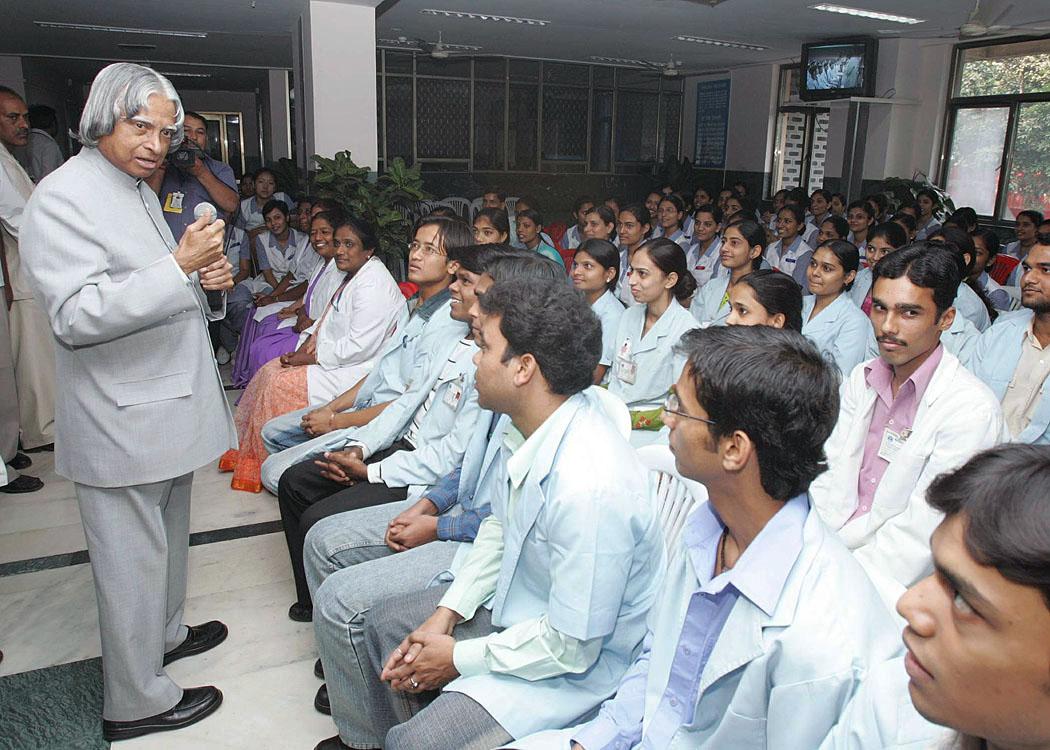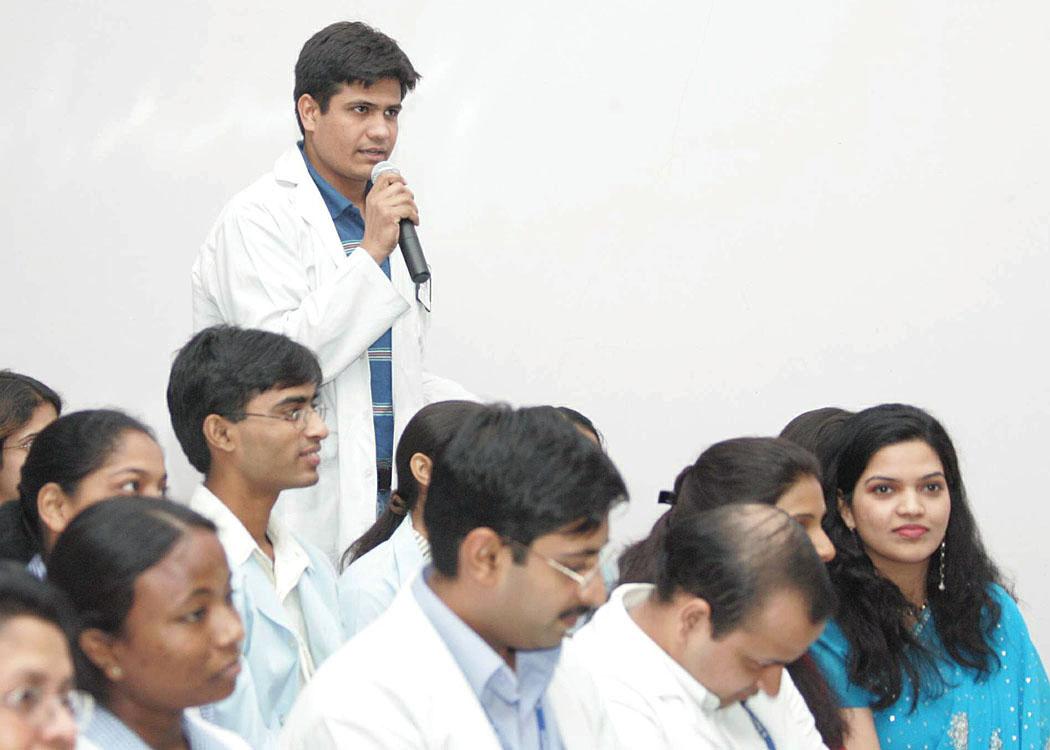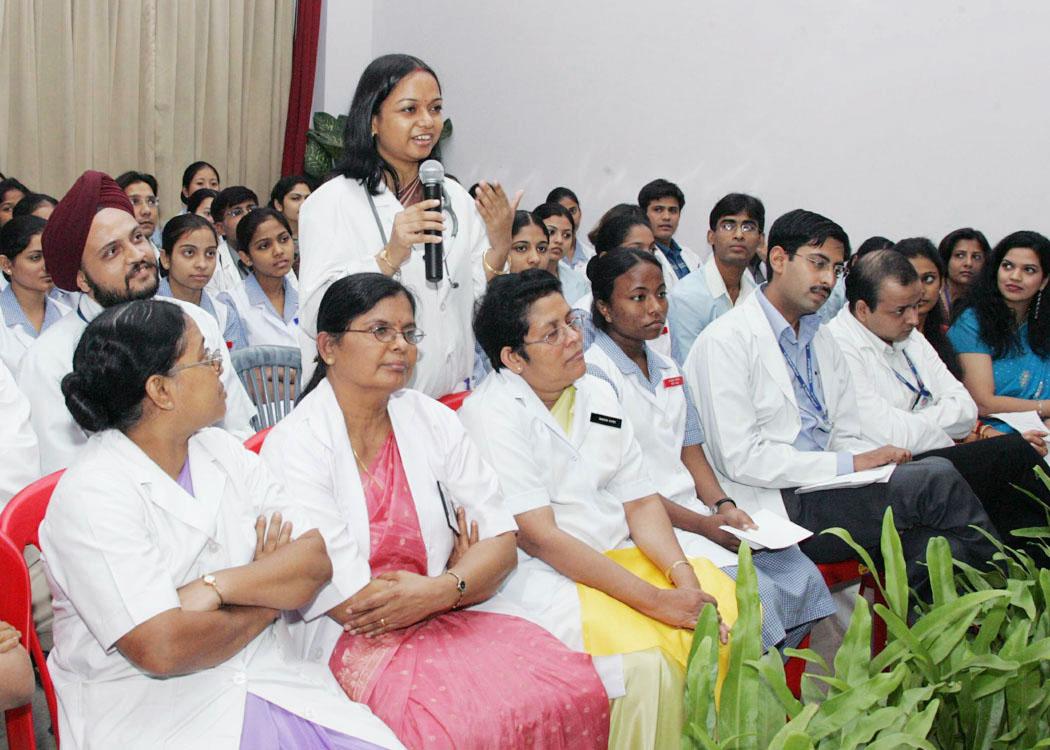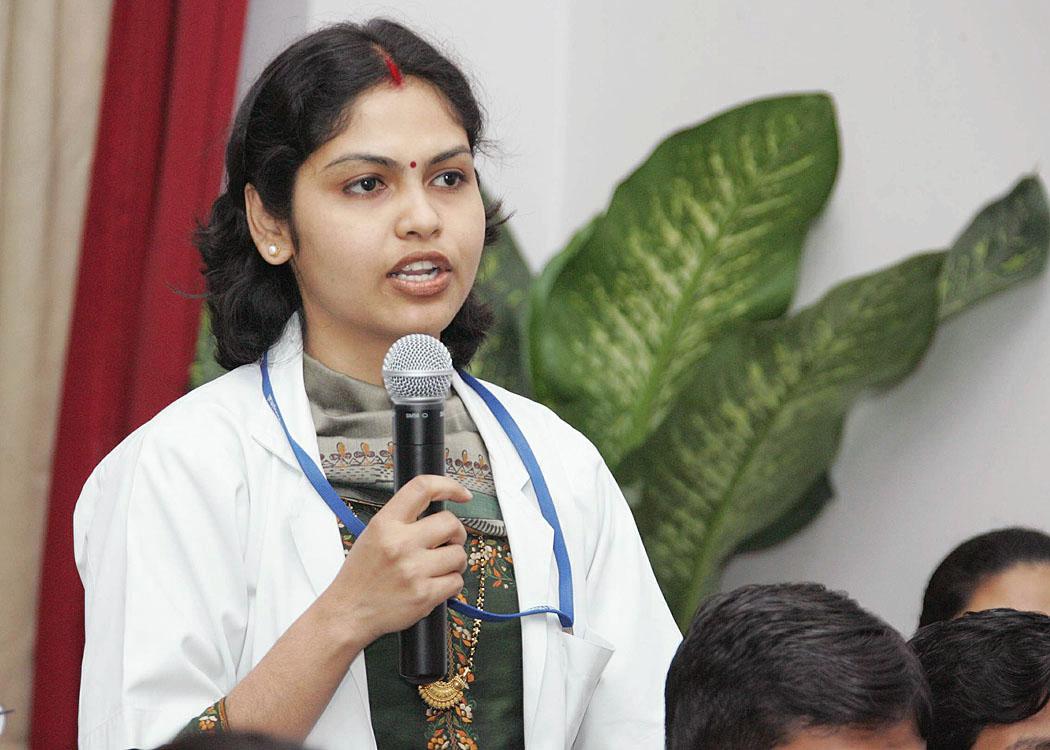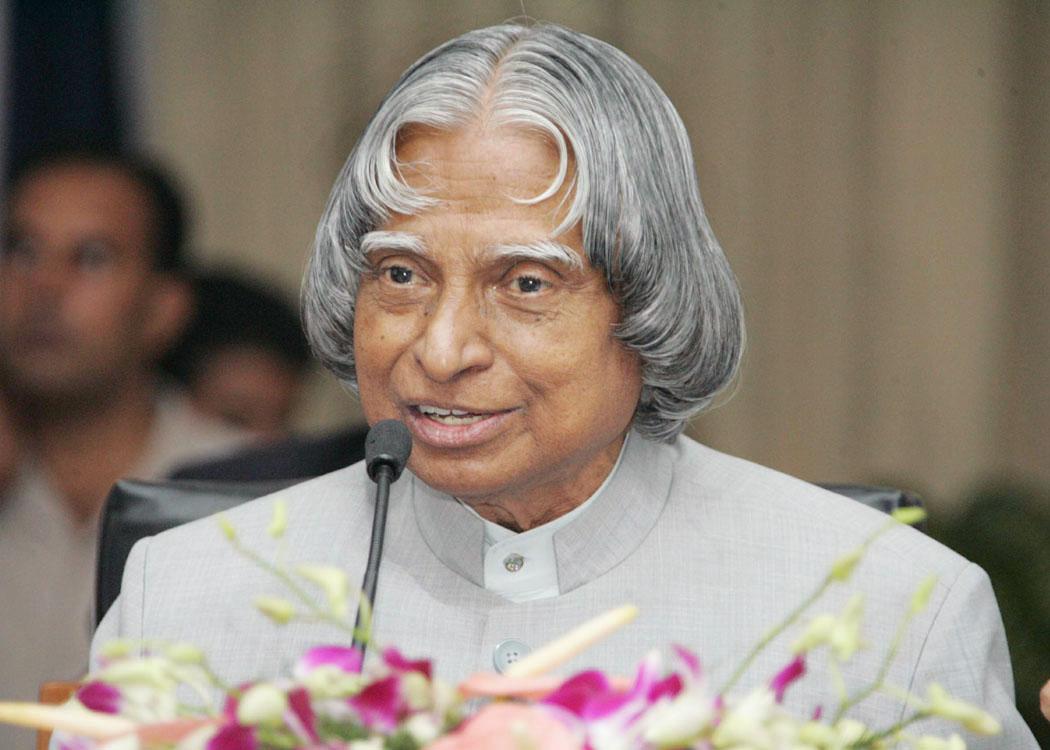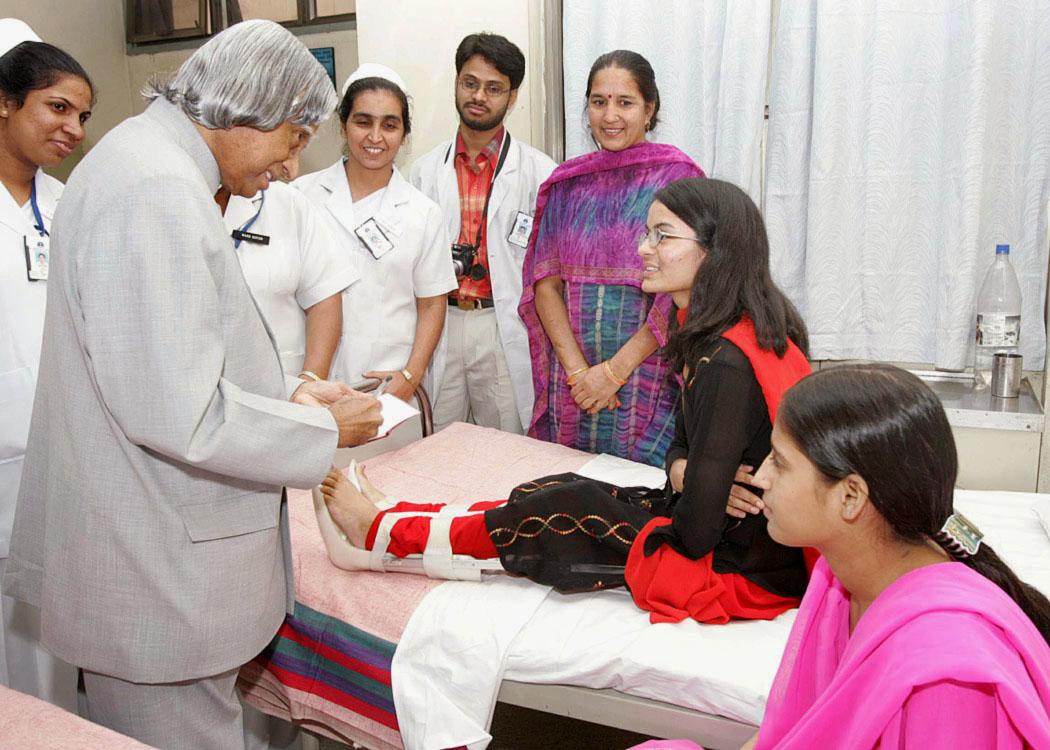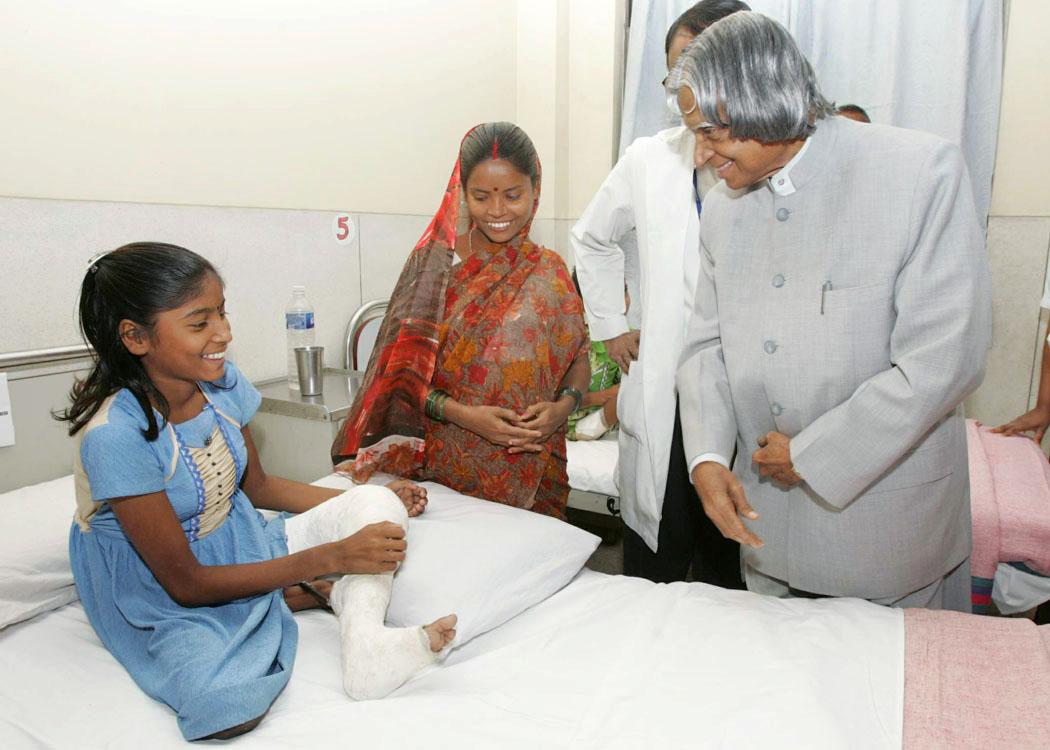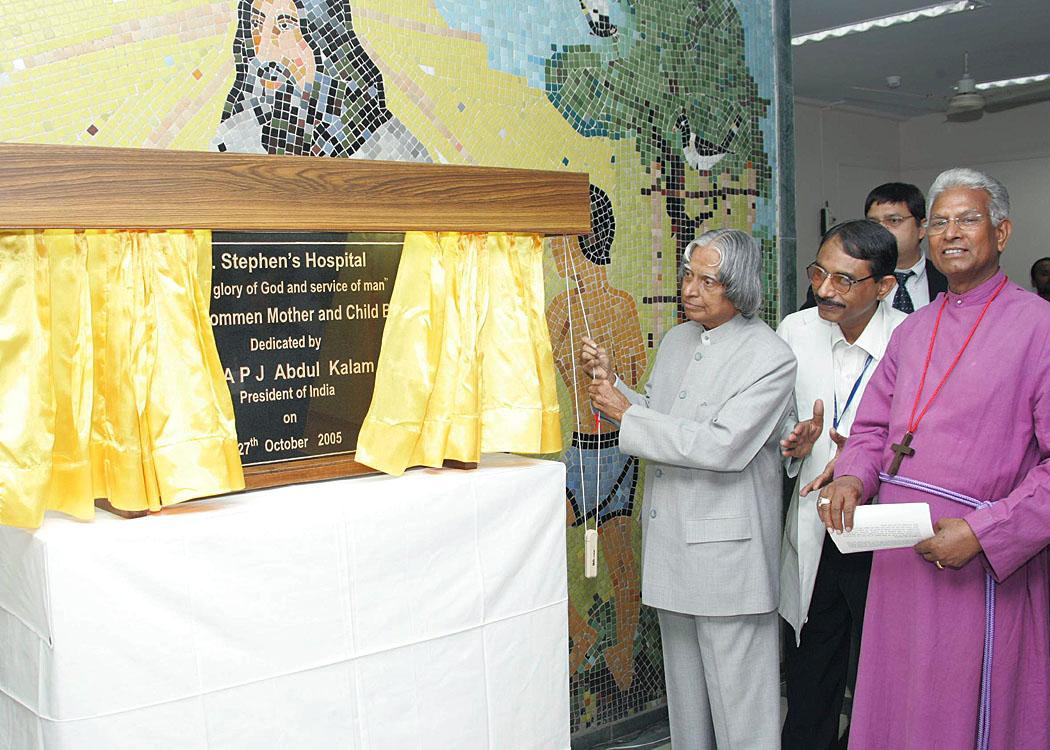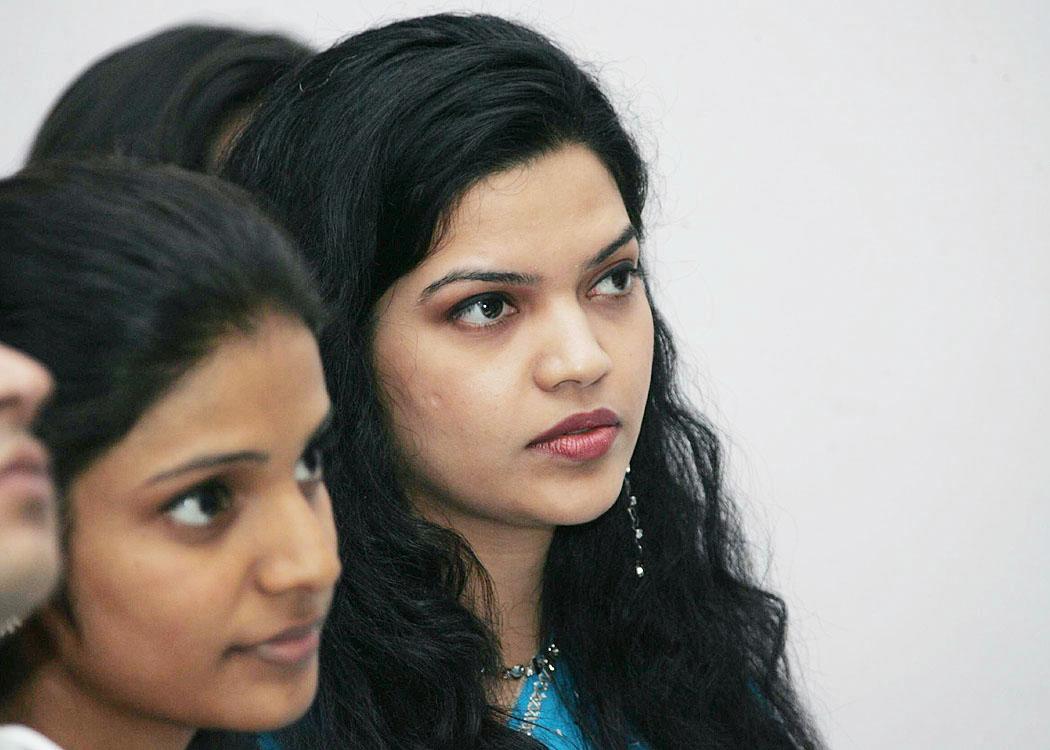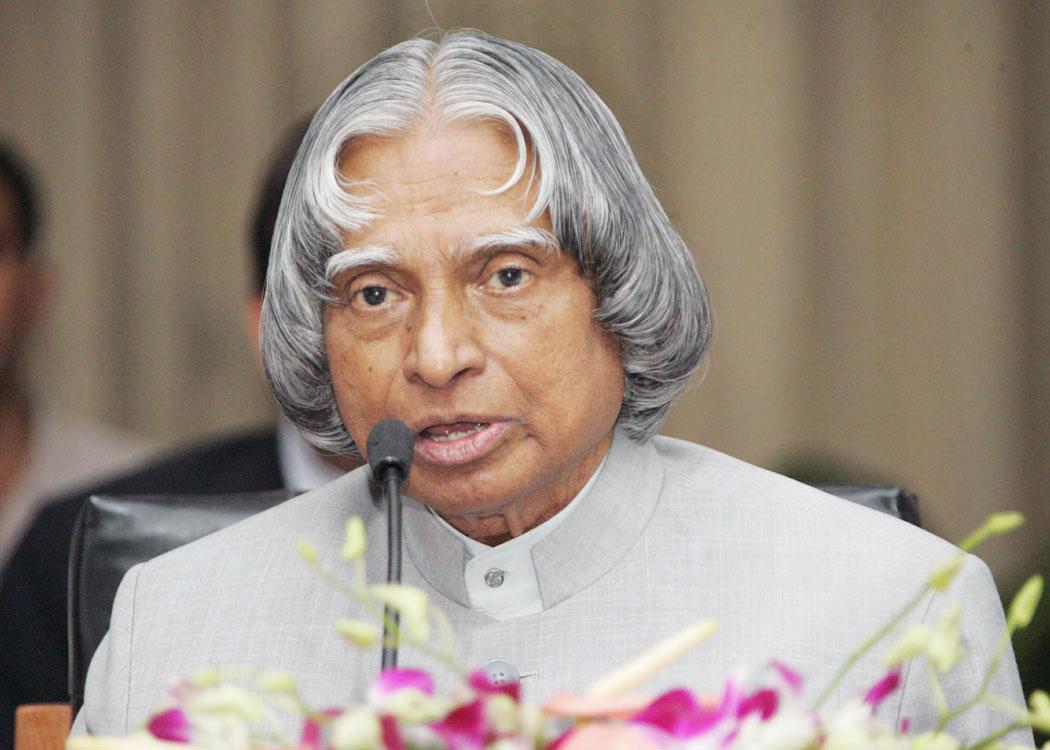Address At The Ceremony Of Renaming The Mother And Child Block Of St. Stephen'S Hospitall As Dr. Lucy Oommen Mother And Child Block, New Delhi
New Delhi : 27-10-2005
Let my Brain remove the Pain
I am indeed delighted to participate in the naming ceremony of the Mother and Child Block of St. Stephen's Hospital as Dr. Lucy Oommen, Mother and Child Block. I greet the organizers, doctors, para-medical staff and all other members of St. Stephen's Hospital Community. I understand Dr. Lucy Oommen after her appointment as the first Indian Medical Director of St. Stephen had worked hard and realized the growth from 140 bedded maternity hospital to a 450 bedded general hospital. She was the most sought after obstetrician at Delhi at that time. She has always been concerned about the poor not only within the hospital but also outside the hospital. This prompted her to start the community out reach programme. Her creation of an institution called Patient's Welfare Society is an innovation and is an effective group supporting patients who have no means to pay for any treatment. She was totally wedded to the profession and during her five decades of service in St. Stephen she had become the role model for the entire medical community. The naming of the Mother and Child Block on her name is definitely a fitting tribute to such a dedicated doctor of this hospital.
When I see the Doctors I see them as pain removers. In a hospital when no doctors, no relatives are around the patients during night time, in the wards what you hear is pain and pain. That is the time the nurses go around to provide consolation and relief to the patients. At that time nurses appear to be angels for the patients to cater to their requirements like medicines, dressing and other daily needs. All of you provide yeoman service in removing human miseries and pain with human intelligence and patience. "Service to human being is service to God". I greet the management, doctors, paramedical and support staff for their contribution in providing the state-of-the-art Medicare to the needy patients. I was thinking what I should talk to this audience. I would like to talk on the topic "Let my brain remove the pain".
Health Grid
Indian Space Research Organization through their INSAT network has connected 25 major hospitals in the mainland. From there they are providing telemedicine connectivity to remote areas including our islands. Rashtrapati Bhavan Clinic is also connected to the CARE Hospitals Hyderabad through telemedicine facility. Also there are a number of public and private initiatives, such as AIIMS, Apollo, Narayana Hridayalaya, Sankara Nethralaya, Aravind Hospitals. There are exclusive tele-medicine etc. The mission of telemedicine with multiple network is gaining momentum and it will spread to all the equipped Primary Health Centres in the country, medical colleges and research institutions in due course.
We need to establish a Health GRID, connecting the various health care institutions with regard to the super specialty and general medicine areas. Also healthcare training institutes, such as, nurses, para-medical staff and doctors and the medical research institutions networked to health grid. This will enable unique case studies and experiences to be exchanged between the super specialists through this health grid. It will also be possible to conduct Conferences of specialist doctors from multi centres to discuss the critical disease patterns and provide treatment. St. Stephen's Hospital can become a partner to this mission. Now I would like to discuss about the healthcare insurance scheme for providing cost effective quality healthcare to the people below poverty line.
Medical Insurance
In addition to the above to make medicare affordable, a Medical Insurance Scheme which is in vogue in some parts of the country can be implemented by St. Stephen's Hospital. In Karnataka, the state co-operative department in collaboration with Narayana Hrudayalaya has come out with a scheme called Yeshasvini. In this scheme, the villagers are required to pay a premium of Rs. 5 per month. The government contribution is Rs. 2.50 per month. There are over two million members in this scheme; the members are eligible to get free treatment from the best available medicare facility in the state in 85 recognized hospitals. Presently in this scheme they have provided free medical consultation to 50,000 people and carried out over 10000 operations including 800 open-heart operations in one and a half year period. This model or an improved version can be considered by St. Stephen's Hospital for implementation among the poor clientele of this hospital for providing quality health care at an affordable cost.
Doctor is a friend and guide
Recently, there was a meeting of cured patients, their doctors and a few social workers. One important point emerged during the interaction was that the relationship between the patient and doctor extends to patients' family. This in turn, transmits effective messages from one family to another family on advice to prevent the diseases, necessity of periodic checks, the dietary habits and the need for life style changes including exercise for good health. Actually, I believe this good contact between the doctor and patients is comparable to that of a teacher and student. I request every doctor to play the role of a teacher in advising every family on disease prevention and methods to lead a healthy life. I hope you will find time for this noble action.
Holistic Treatment
In India we are having a variety of traditional systems of medicines such as Yoga and Naturopathy, Ayurveda, Unani, Homeopathy and Siddha. These ancient systems of medicines are unique to our country and many times they are complimentary to each other. This system needs scientific method of testing with clinical data. I would consider appropriate to create these wings in the hospital so that patients can have a choice in determining the system of medicine, which they would like to have. This will enable rapid development of medicines and fast track clearance of products through integrated clinical trials and approval from ethical committee. This area will be a great wealth generator for the nation.
Life style intervention for heart care
I would like to recall an experience during my work as Scientific Adviser to Raksha Mantri. The life style change pattern can be a great influencer in reducing the occurrence of cardiac problem among the Indian population. I recall there was a joint project of Defence Institute of Physiology and Allied Sciences (DIPAS), DRDO and the Global Hospital Research Centre governed by the Brahma Kumaris for studying the effect of "holistic lifestyle intervention" on the patients suffering from Coronary Artery Diseases after angioplasty and surgical intervention. The project involved both Control Group and the Experimental Group. The Control Group was subjected to conventional treatment whereas the Experimental Group was supported by an intervention involving low fat, high fiber vegetarian diet, walking and aerobic exercises and systematic meditation. This psycho-physiological mind-body approach in treating heart patients of the Experimental Group resulted in dissolution of angiographic plaque and improvement in microcirculation of blood in heart components of the patients. The treatment was also supported by participation of spouses and other family members of the patients, leading to a unique family system approach to Medicare.
When I conducted the first review of the project, I found that nearly 60 people had reported positively about their well-being and their clinical reports showed remarkable improvement. When I visited the hospital again after two years, nearly 400 patients gave us a joyful presentation about their experiences. It was an experience of great happiness to see the patients presenting their X-ray records and angiogram, showing us how this unique way of treatment has given great relief to their hearts. The conflict between cardiology, psychology and theology still persists, but this experiment has given a new thrust and a lasting cure for heart patients. The message I would like to convey is that through the integration of medical science, physiology, health care, psychology and spirituality, a native Indian knowledge system in combination with allopathic systems can emerge. St. Stephen's Hospital research team can study this model, improve them and apply them in their hospitals.
Stem cell therapy for future heart ailments
Newer knowledge emerging out of research on stem cells from abroad and India has to be taken note of and studied. Drawing of tens of thousands of stem cell - immature cells that are capable of transforming themselves into almost any kind of tissues from the suffering patients and inject them into the heart to stimulate heart repair. In one case, it is reported that the pumping efficiency has increased from 25% to 40% over a period of four months. In 2003, successful stem cell procedures that resulted in measurable boost in blood pumping capacity have increased substantially in many countries across the globe. This holds a big promise for effective heart repair for ailing people.
Stem cell research: During my visit to various laboratories in India, I happened to see the stem cell research being carried out for different purposes including brain research. I would like to share with you an important stem cell research application in the field of cardiology. When I met Dr.P. Venugopal, Director, All India Institute of Medical Sciences (AIIMS) a famous cardiovascular and thoracic surgeon, he told me about his experiences. He said in one of the cardiac diseases, where conventional medical and surgical treatment were ineffective because of the affliction of the heart muscle, use of autologous bone marrow stem cells implantation into the diseased heart muscles had been applied in order to improve the function of heart muscle. This kind of application of this procedure is the latest and very few cases have been done in the world, the first time in India. This is expected to open new frontiers in the treatment of patients for regeneration of heart muscles, thereby giving new hope for the patients suffering from end stage heart disease. I suggest the St. Stephen's Hospital may participate in such a great mission of research.
Conclusion: God's creation
Availability of comprehensive healthcare, education and research centres like St. Stephen's Hospital is a significant step forward in dealing with the most challenging healthcare problem of this city. However, we need an active connectivity of general practitioners and medical social workers with this centre to make a major impact in terms of reaching the needy as well as helping them out. The mission of offering the best available patient care, the most sophisticated education to physicians and patients and be the leader in medicare is indeed a very challenging task. This mission demands highest of the human capabilities in intelligence, innovation and perseverance.
It is also equally important that the general public is educated about the healthcare risks of exposure to disease as a result of life-styles and habits. To this end, education of children on this subject should begin as early as in the primary schools so that children do not get initiated into bad habits and thus remain immune from the impact of any disease. Let our new generation enjoy health and prosperity and do not succumb to the needless waste of human life. Disease cure and disease prevention are indeed twin challenges to the medico and health-care community. Challenge transforms into mission of pain removal and thereby provides useful life that is close to the God.
I rename the Mother and Child Block of St. Stephen's Hospital as Dr. Lucy Oommen, Mother and Child Block and my best wishes to all the members of St. Stephen's Hospital for success in their mission of removing the pain of the people.
May God Bless You.

